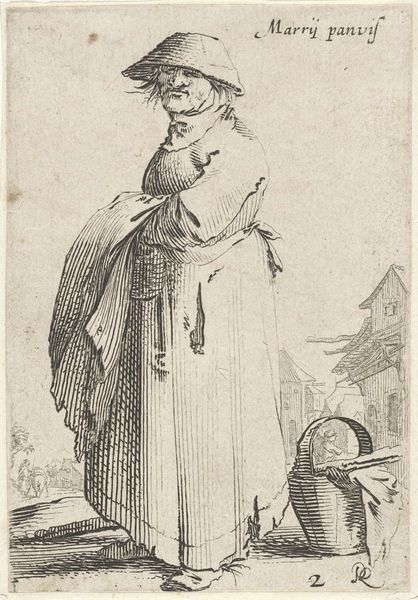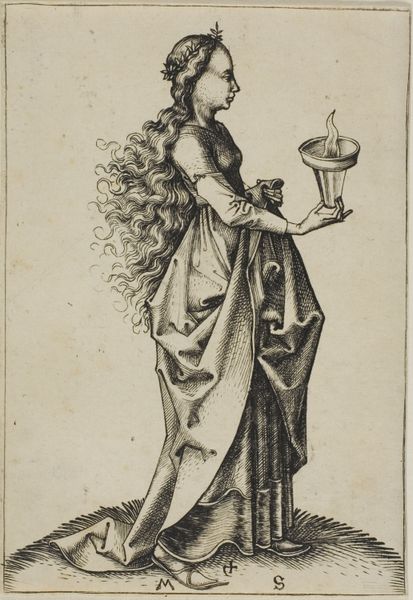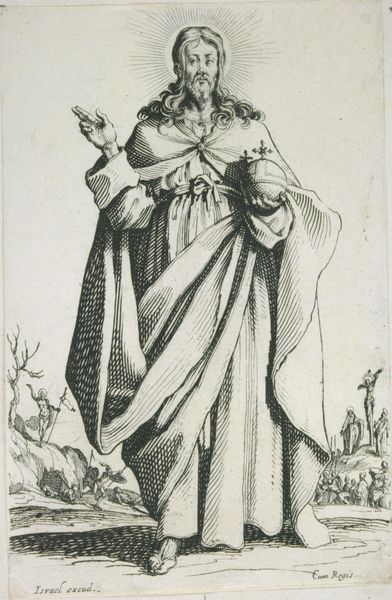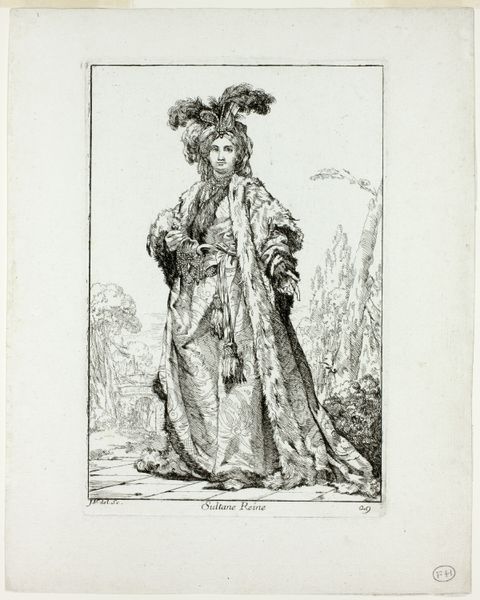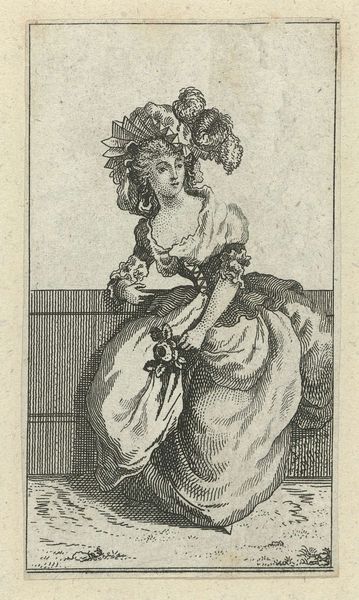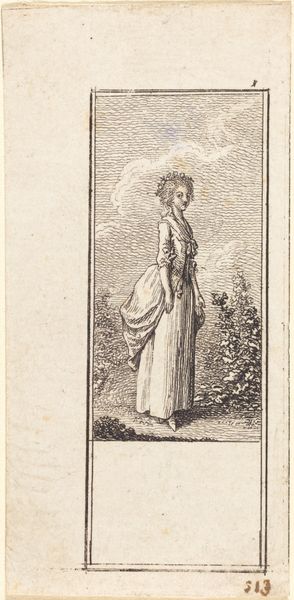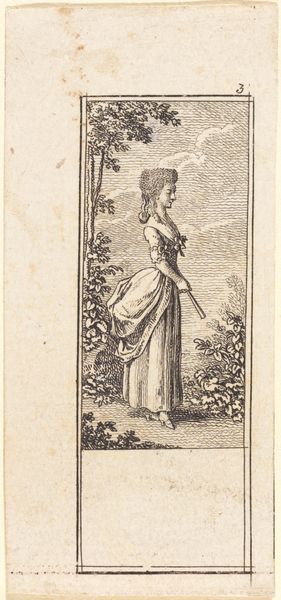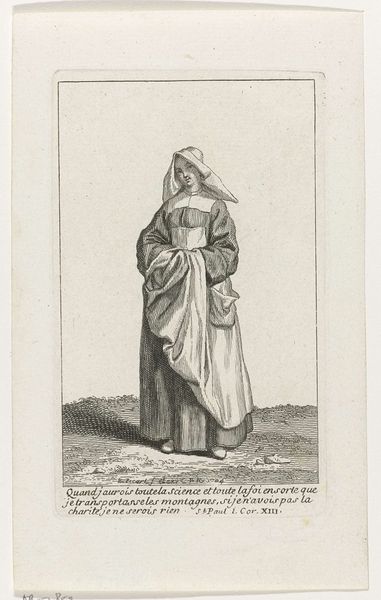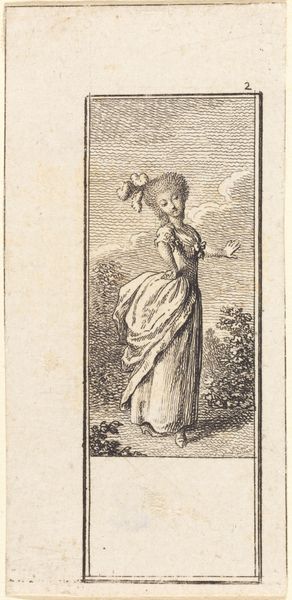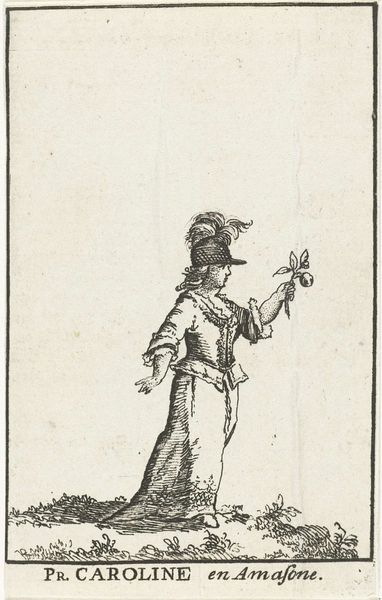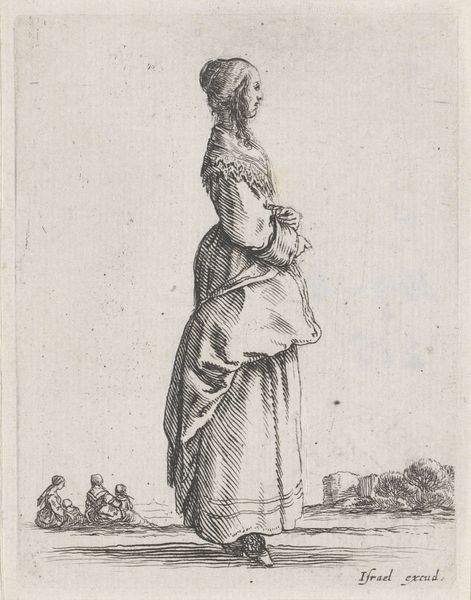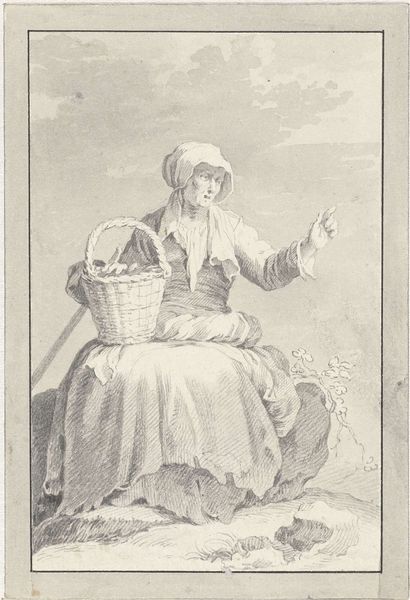
print, intaglio, engraving
#
portrait
# print
#
intaglio
#
pencil sketch
#
old engraving style
#
figuration
#
pen-ink sketch
#
line
#
pen work
#
northern-renaissance
#
engraving
Dimensions: height 62 mm, width 43 mm
Copyright: Rijks Museum: Open Domain
Curator: This intaglio print, created around 1526 by Jacob Binck, is entitled "Maria Magdalena met zalfpot." I’m struck by the detail achieved in such a small, delicate work. What’s your initial take? Editor: My immediate reaction is that it’s melancholic, and rather subdued despite all the detail in the rendering of the clothing and the landscape in the foreground. It reminds me of pen and ink. Curator: Indeed. The image invites a deconstruction of gendered piety. Mary Magdalene, traditionally depicted as a repentant sinner, is here framed as a saintly figure, haloed and holding the ointment jar symbolic of her devotion. How does the work negotiate the complex narratives surrounding her identity, repentance, and redemption? Editor: It's interesting to consider the labor involved. The level of detail, achieved through meticulous engraving, would have required immense skill and time. This print circulated among a specific class. The material itself implies wealth and artistic patronage; it speaks to the social standing of art and its consumption within this era. Curator: Precisely! This image circulated within very specific social strata. Its creation depended on not just artistic skill, but economic infrastructures. Viewing her through a feminist lens, we can examine the image’s participation in both reinforcing and subverting societal expectations of women. Is she presented as a paragon of humility or a figure of power? How does the composition—her forward-facing gaze, her posture—inflect this interpretation? Editor: The print is not neutral. Every stroke reveals decisions about visibility and value: What narratives are supported, what material realities made visible. Look at the details: the gown, for example, suggests privilege and, further, the role that lavish materials play in shaping power constructs. It's all intricately tied to wealth and influence, isn’t it? Curator: Absolutely. We can also consider the iconography and symbolism associated with Mary Magdalene – particularly within the context of Northern Renaissance art. What did the zalfpot – or ointment jar – signify? How might the viewer's own gender or social positioning impact their reception of the artwork? Editor: Thinking about materiality gives such a sharp focus to the work itself, as an object. Seeing these objects as extensions of social class and how the making process—engraving—demanded resources really challenges our idea of art and its creators. It requires a constant questioning, doesn't it? Curator: Precisely! Viewing the work from a materialist or an intersectional lens deepens our understanding of art as social and political practice. Editor: Indeed. It makes you see beyond the image and confront what’s behind the artist’s process and subject, allowing for critical reflection.
Comments
No comments
Be the first to comment and join the conversation on the ultimate creative platform.
